Yesterday, my son looked up from breakfast and announced, “That’s not a regular cat.”
He was correct. The creature walking across our backyard was twice as large as a “regular cat,” and also possessed much longer legs and a shorter tail. A bobcat, strolling casually across our backyard. It did a loop, pausing to check out our chicken coop (luckily, our birds were safely locked inside).
And then, a smaller bobcat – likely the kitten – appeared. What a spectacular backyard sighting.
For nature lovers, seeing charismatic mammals is always thrilling. We plan trips around seeing bears and moose and whales. It’s why wild mammals are the most frequent subject of nature documentaries, and also frequently appear on the covers of conservation magazines.
But even with mammals, most species are ignored. Many haven’t even seen the mammals in their own neighborhoods. This is because many wild mammals are cryptic. They are nocturnal, and often elusive.
Some of these elusive, wilderness-dwelling mammals roam through wildlife watchers’ dreams. Think wolverine or mountain lion. But others are almost unknown. Those are the species I focus on here. Some are incredibly difficult to spot due to restricted range or inaccessible habitat. Some may be in your local woods or fields, but you just haven’t noticed them.
But they’re worth seeking out, and not only because they are all quite charismatic. Your sightings can help researchers track population trends, as several of these species may be disappearing without conservationists even knowing it. And it is difficult to save what we don’t understand. And it’s just as difficult to save what we don’t love.
My hope is that wildlife watching builds both that understanding and that love necessary to conserve the world’s biodiversity, including little-known mammals.
Have you seen any of these critters? (And if you’ve seen them all, you’re either very lucky or very obsessed). What are your favorite sightings of little-known mammals? Let us know in the comments.
-
Least weasel
Mustela nivalis
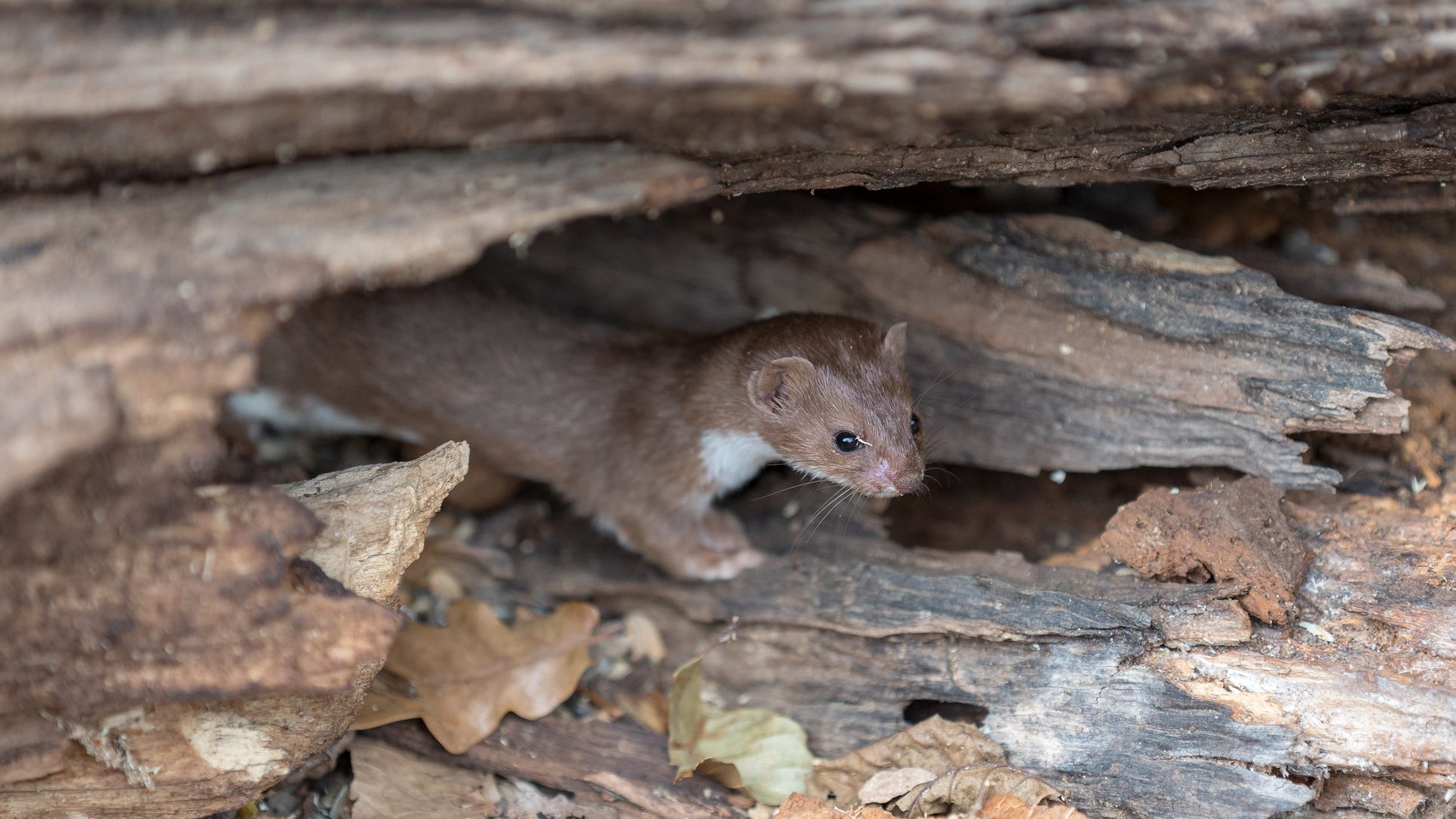
A least weasel. © Joachim Dobler / Flickr The mammalian Order Carnivora includes some of the most dramatic creatures on the planet, the lions and tigers and bears. It also includes many familiar neighborhood mammals like raccoons, striped skunks and red fox.
The least weasel is the smallest of the carnivores. They weigh less than two ounces and is about 7 inches long. It’s found across much of the northern tier of the United States, and much of Canada and Alaska. The least weasel is small but a mighty predator, as it will starve if it doesn’t consume about half of its body weight each day.
It’s also incredibly difficult to see. Researchers might catch them in small mammal traps, but for most of us, we’ll never even glimpse one. If you do, record your sighting. As recently covered in Cool Green Science, all 3 North American weasels are facing population declines, and sightings can help researchers track how weasels are faring.
Distinguishing weasel species can be difficult. All three are brown, and some turn white in winter. The least weasel can be identified by size, but its tail is diagnostic. It is much shorter and lacks the black tip found in the other two species.
-
Mountain beaver
Aplodontia rufa
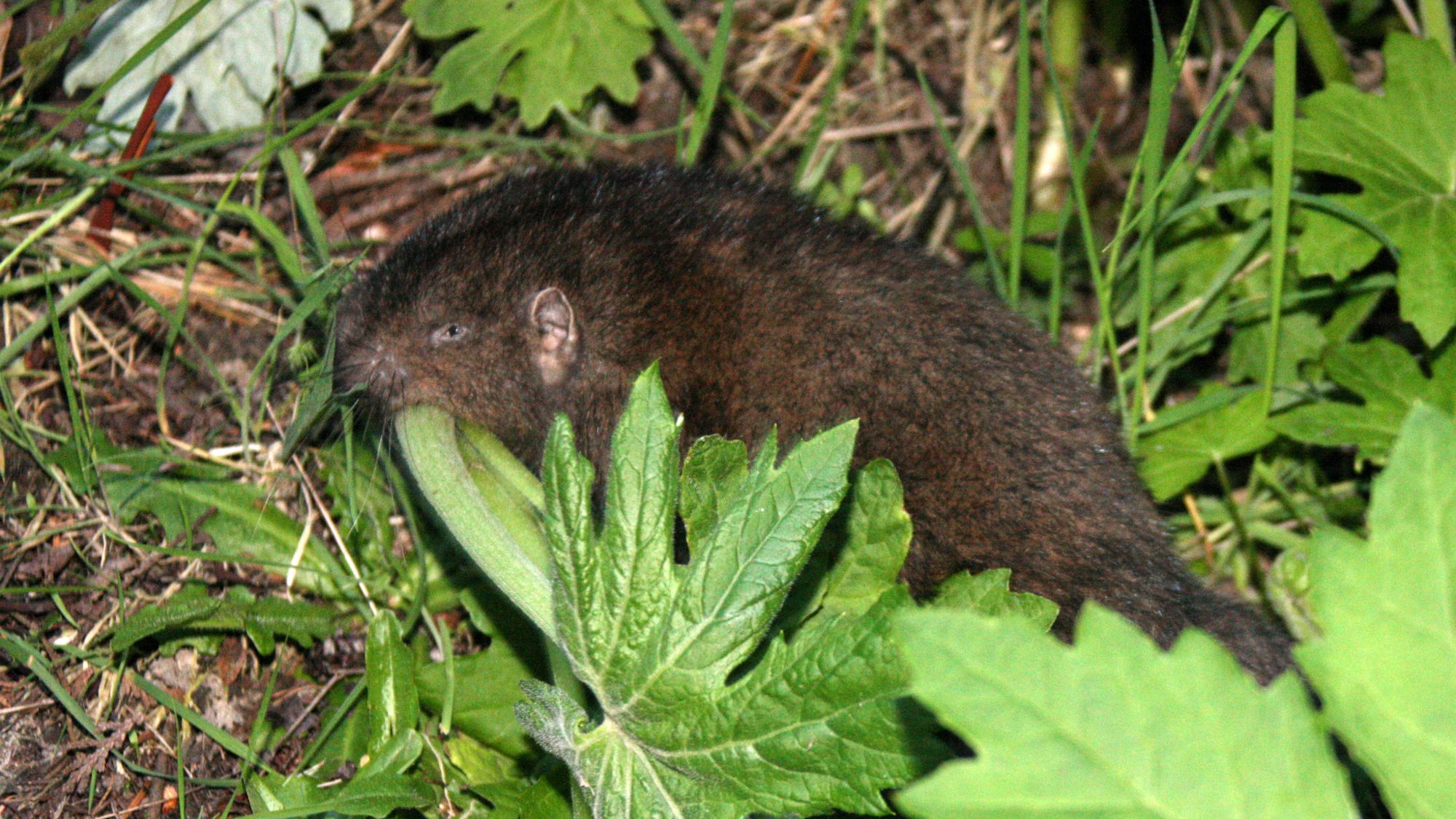
© Coke Smith / cokesmithphototravel.com The mountain beaver is not a beaver, nor is it always found on mountains. But this poorly named rodent is a one-of-a-kind fuzzball that lurks in the coastal forests of the Pacific Northwest.
As mountain beaver expert Samantha Hopkins puts it, ““Most people don’t know there are these little brown loafs living in forested tunnels and eating ferns.”
Hopkins, by the way, has studied mountain beavers for many years, but has never seen a live one in the wild.
I know some hard-core mammal watchers have had luck staking out their tunnels or colonial areas. It’s not an easy quest, but the reward is an encounter with a cool creature that evolved quite differently from other rodents. You can read more about them in this in-depth feature I previously wrote.
-
White-sided jackrabbit
Lepus callotis
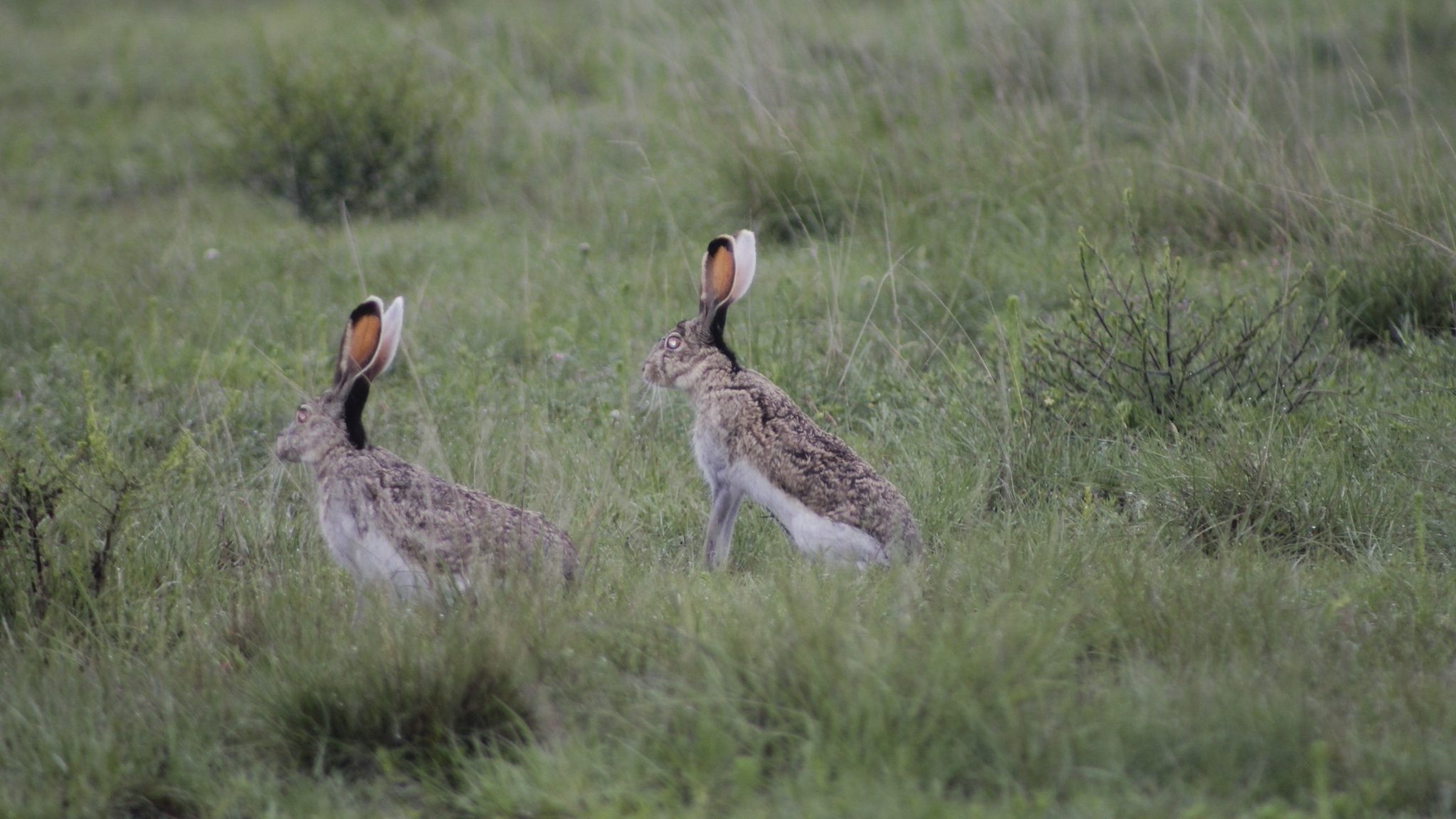
© Juan Cruzado Cortés / Wikimedia Commons I love jackrabbits. I love their impossibly long ears and even more impossibly long jumps. I love the landscapes you find them.
Jackrabbits are often considered abundant. But there are signs that several species are now much less abundant than they once were. Some declines are alarming. Like the white-sided jackrabbit.
The white-sided jackrabbit is primarily found in Mexico, where it is endangered. Its range also includes Hidalgo County in southern New Mexico. All jackrabbits are quite visible, so it is possible to see them in the United States, but they have to be among the rarest of mammals. In 2011, biologists counted 45 white-sided jackrabbits in the United States. That number is likely lower now.
Changes in grazing practices is doubtless driving the decline. I am not a fan of the phrase “see it before it’s gone.” Let’s go see the jackrabbit, then work to protect it so it’s not gone.
-
Spotted skunk
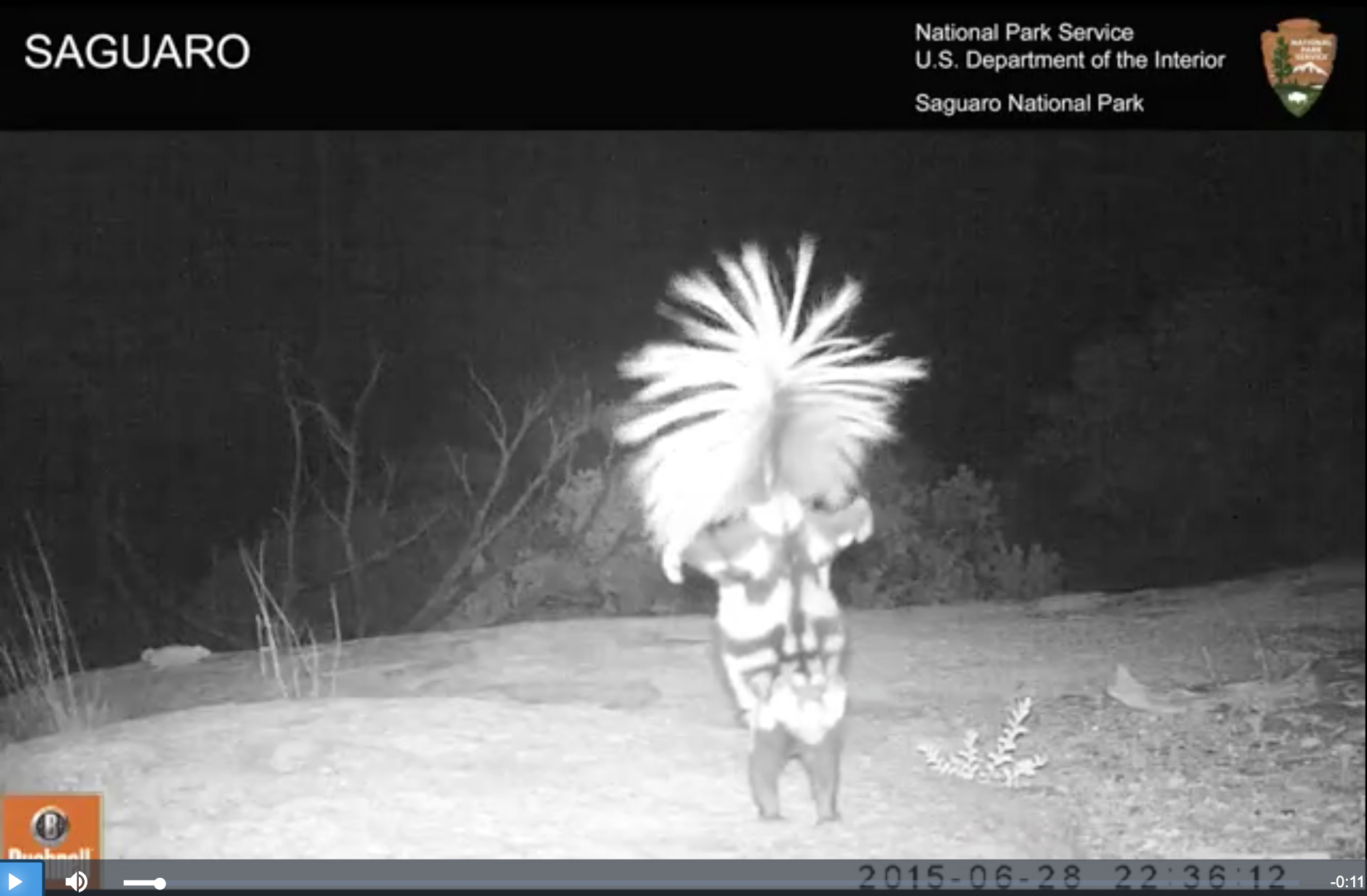
© Saguaro National Park / Flickr A new paper finds that the spotted skunk is actually 7 species, a taxonomic split that has been covered by major media outlets. Why? I suspect it’s simply because spotted skunks are cute. Really, really cute. Also, when it sprays, it stands on its two front legs, giving the appearance of a skunk headstand.
The popularity of the news coverage is also in part because most people have never seen one, although the spotted skunk has a fairly wide range across the United States and well into Central America.
Range maps indicate the western spotted skunk is found around my home in southwestern Idaho. I have never seen a live one. I have never seen a dead one. I have never met anyone who has seen one here.
This seems to be typical throughout their range. Yes, there are fairly regular sightings in the Grand Canyon and Channel Islands national parks. Reptile enthusiasts often see them while looking for snakes in Florida. They turn up on camera traps. But most of us in probable spotted skunk range never see one.
Biologists I’ve spoken to say this may be because the species in serious decline. So your spotted skunk sightings are important. Try to get a photograph and post it on iNaturalist. This will help conservationists better understand spotted skunk population trends.
-
Round-tailed muskrat
Neofiber alleni
Spend enough time near wetlands and lakes in North America, and you’ll probably see muskrats. The round-tailed muskrat is another matter entirely. This species – the only in its genus – is found only in Florida and the Okefenokee area of Georgia. It does not overlap in range with the common muskrat.
It is also incredibly difficult to see. Mammal watcher extraordinaire Jon Hall estimates he spent 100 hours searching before he found one. They live in dense wetland vegetation. They are mainly crepuscular and nocturnal. You might see slight vegetative mounds, but even these are much more subtle than the mounds of common muskrats.
-
Water shrew
Sorex palustris
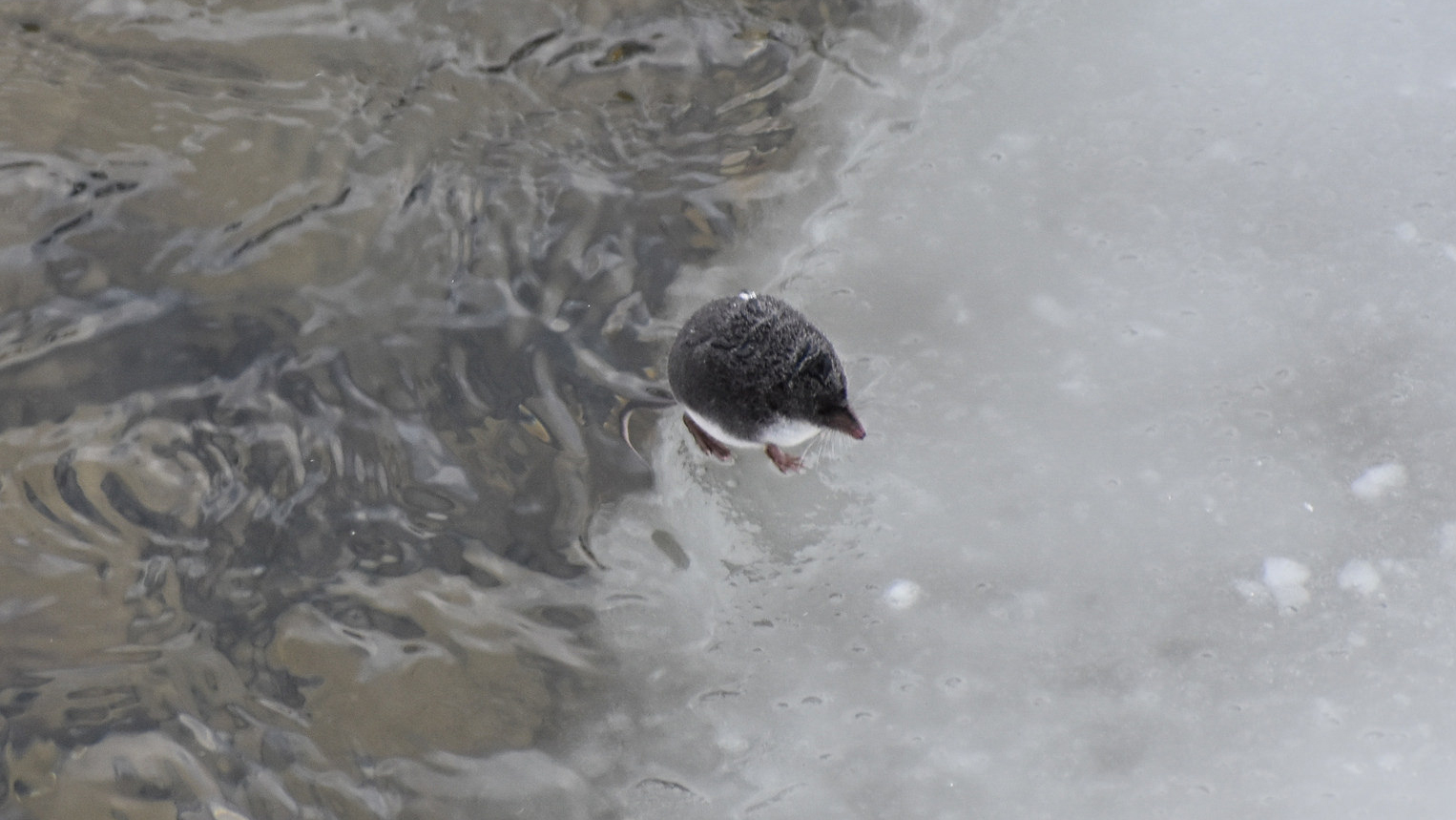
Water shrew on Pebble Creek. © NPS/April Henderson / Flickr Shrews are hyperactive, ferocious, little predators. Some species are among the most common North American mammals. Any shrew sighting is interesting, but the water shrew is my favorite.
As the name implies, the water shrew hunts aquatic insects underwater, often in small streams. It has stiff hairs on its feet that allow it to scamper across the surface of the water. Its stiff fur also traps air bubbles, allowing it to stay underwater for short bursts.
Last year, I got a quick look at one skittering across the top of the water. This summer, while fly fishing in Idaho’s Sawtooth Mountains, I saw one swim by in clear, shallow stream. I could clearly see the air bubbles in its fur as it darted along, and I count it as one of my all-time favorite small mammal sightings.
-
Flying squirrel
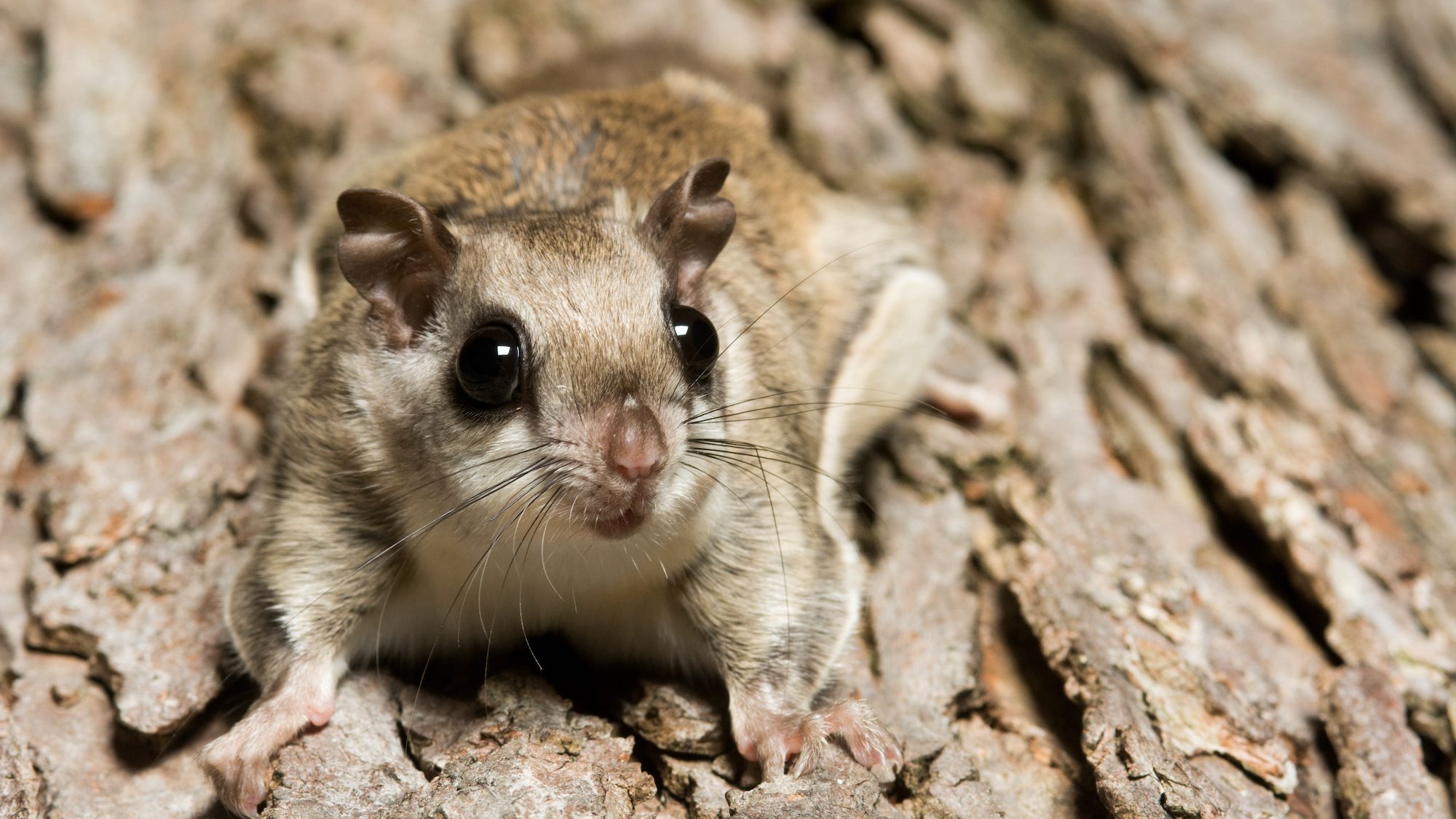
© Shutterstock Members of the squirrel family – tree squirrels, ground squirrels, chipmunks, marmots – are fun to spot across the continent. A dedicated mammal watcher, visiting national parks, could reasonably observe most of them in their natural habitat. The North American flying squirrels (now considered to be 3 species) are quite challenging for those trying to complete a “squirrel viewing slam.”
It’s not because they are uncommon. They are found in many forested habitats. But they’re nocturnal. And they glide. And you can spend a lot of time looking in the air at night without seeing them. I write this from experience.
There are nature centers that have feeding stations, offering close-up and unforgettable views. I saw a southern flying squirrel this way in Arlington, Virginia. They’ll sometimes pop out of a larger bird nesting box, and sometimes they get caught in mist nets set for owls. If you go looking for flying squirrels, bring a UV light. Why? Because they glow in the dark.
However you see one, a flying squirrel is a special sighting.
-
Pocket gopher
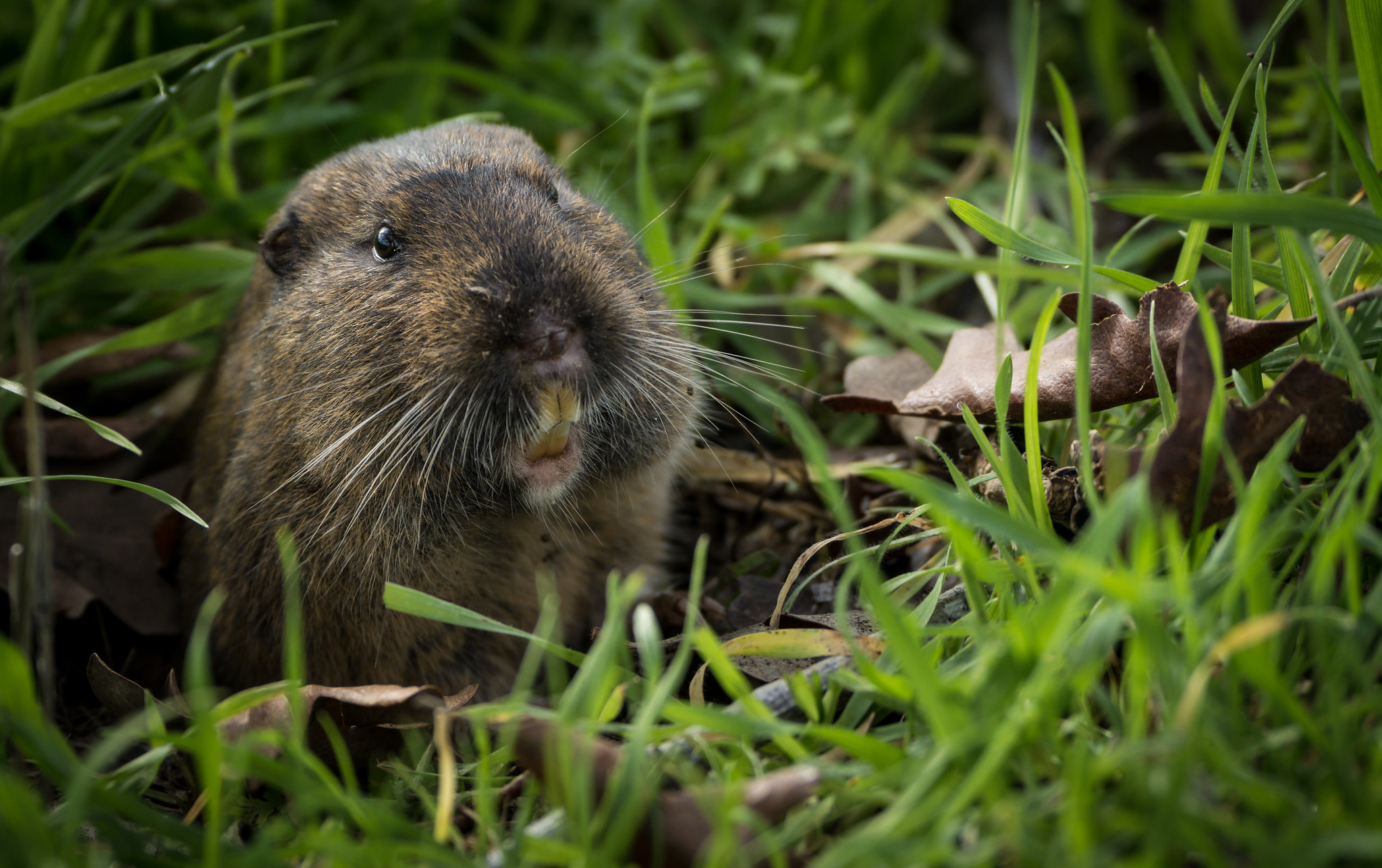
Peekaboo pocket gopher! Photo © Wade Tregaskis / Flickr There are many species of pocket gophers across the United States. They are considered agricultural and lawn pests in many places. Their mounds are highly visible. I include them here because most never take the time to stop and enjoy a gopher sighting.
First, the name “gopher” is often applied, incorrectly, to a host of other creatures including ground squirrels and voles. The actual pocket gopher is a short, stocky rodent with beady eyes. You don’t see them because they spend almost the entirety of their lives underground.
It’s time to give the pocket gopher some attention. Finding one on purpose can be a fun activity for the whole family. They are very photo-sensitive, so if any light gets into their hole, they quickly move to plug it up with dirt. This presents an opportunity for the keen (or perhaps deranged) mammal enthusiast. Find a fresh mound, poke a hole in the loose dirt and wait. With a little patience, you’ll see that even reviled pocket gopher is actually a great little animal. Check out my guide to the fine art of pocket gopher spotting for more details.
Wherever you live, there are undoubtedly cool mammals roaming around you haven’t seen. Get out and look, and let me know what you find in the comments.
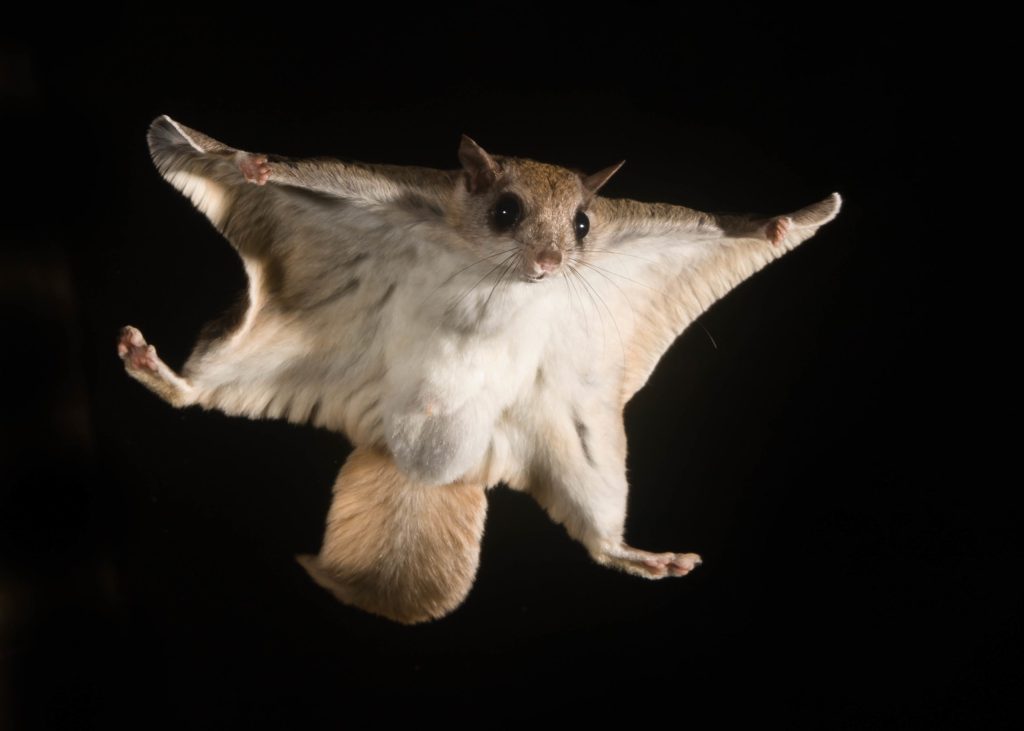



I read that some weasels glow in the dark. I have a video from a Blink camera that shows a long, skinny critter darting back and forth, and it’s glowing! If I freeze it, I can see eye flash and short little legs. I’m in Maine and we’ve got over a foot of snow. Could it be a white weasel and the camera is reflecting off of it?
My acquaintance with the spotted skunk began in the late 1970’s when I was a game warden assigned to the Twin Falls, Idaho patrol area. I would frequently get calls about skunks in homes in the South Park area of Twin falls; this area of town was close to Rock Creek which flowed through town to the confluence with the Snake River. One evening I responded to a skunk complaint at a home in this area. While talking to the home owners , a spotted skunk walked in to the living room and started to eat from a bowl of cat food in the adjoining kitchen area. The skunk ate its fill and left the house as if it was a natural occurrence. I later found that these critters were quite calm compared to the striped skunk and if not disturbed, became “part of the family” so to speak. Cool Critter and not nearly as odiferous as Mephitus mephitus.
Absolutely wonderful photos! I especially like both of the flying squirrels and the pocket gopher, although the information provided about each is even more important than the photos. It increases our knowledge about animals we will probably never see, and in doing so, it increases how much we care about these animals and the environments in which they live. All I can say is, “More please! Much More!”
Great article Matt, as usual. We are fortunate to have flying squirrels routinely coming to the peanut feeders we have for the birds. At times they can be very tolerant of our coming close to them and once I even got to touch one! One day we caught one in the box trap we had set for gray squirrels and when we released the little flying squirrel it climbed up into the rafters of our porch, went to sleep and stayed there all day. I could sit on the swing just feet away and know it was contentedly resting right up above me – what a treat. Not on your list, but we are also glad to know that at least one fisher has roamed our farm as captured by a hunter’s game cam. Thanks again – Bonnie (a good friend of your dear Mom!)
Hi Bonnie,
Thanks for writing. It sounds like I need to visit your farm! It is amazing how well fishers have prospered in PA since their reintroduction. I probably should have included them on the list.
Cheers,
Matt
I love this column!
Thank you for your photos, education, and enthusiasm!!!
Gail Mershon
Philadelphia
2 winters ago I found a “mouse” dead on my central Vermont deck (perhaps my cat killed it. When I looked more closely I realized it was a least weasel ( seeing its large head and jaws). I had a tough old cat years ago when I lived in Vt. back woods who wintered under our cabin and in the spring when we took our tar paper off we found dead weasels , chipmunks and possibly flying squirrel tails..That cat is the only one I have ever heard of who came home with porcupine quills (it was hard to remove them). We also found a frozen fisher cat one winter.
When I was a child in Indiana, I would hang out in my kindergarden teachers yard lined lot with big conifers. Many nests in those trees. But also looking over North Salem road from about 15 feet up I would see flying squirrels on occasion in the evenings, flying across the road. To the conifers from the old woods and oldfields acroos the road. Also saw a Barn Owl while brother and I were waiting for the school bus. Now all that habitat is gone, all cookie cutter houses where snakes, salamanders, barn owls, flying squirres. And an old covered wagon in an old field. With pots and pans still on it. Very sad for me to visit there. Old lady Hildebrand died and the kids sold it off for development.
We had flying squirrels who were nocturnal in Northern Idaho — they would come at night and eat in the bird feeder that my Dad made. We would watch for them. Darker than the ones you showed in your interesting article.
Thanks for bringing back that memory — yes, they are special !